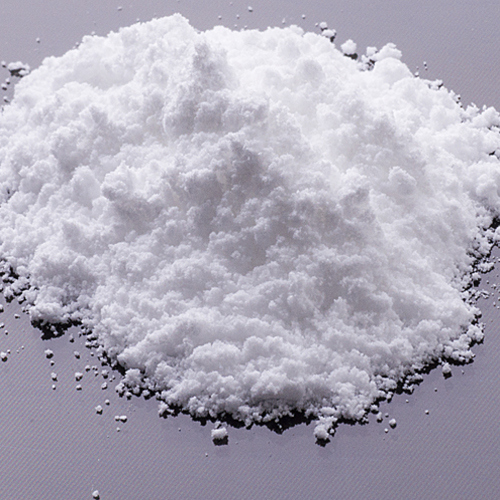
Â
Product Name
Tranexamic Acid
Alias
Amstat
CAS
1197-18-8
EINECS
214-818-2
MF
C8H15NO2
MW
157.21
Assay
99%
Melting Point
 >300 °C
Grade
Pharmaceutical Grade
Appearance
White Powder
Tranexamic acid
Tranexamic acid Product Name:Tranexamic acid
Tranexamic acid Synonyms:4-(Aminomethyl)cyclohexanecarboxylic Acid (cis- and trans- mixture);4-(Aminomethyl)cyclohexanecarboxylic acid;Tranexamic acid
Tranexamic acid CAS:701-54-2
MF:C8H15NO2
MW:157.21
Tranexamic acid EINECS:214-818-2
Tranexamic acid Product Categories:4-Substituted Cyclohexanecarboxylic Acids;Amines;Chiral Reagents;Impurities;Intermediates & Fine Chemicals;Pharmaceuticals;Isotope Labelled Compounds
Tranexamic acid mp:233 °C
Chemical Properties:White Solid
Tranexamic acid Usage:Labelled Tranexamic Acid,Tranexamic acid (T714505) impurity.
Application:
Cosmetics: tranexamic acid freckle and whitening effect
Tranexamic acid that is tranexamic acid, tranexamic acid is a protease inhibitor, can inhibit protease peptide bond hydrolysis catalyst, thus preventing such inflammatory protease enzyme activity, thereby inhibiting the epidermal spots site cell function confusion, and melanin enhanced factor group, and then completely cut off the route because of ultraviolet radiation and the formation of melanin occurred. That spots no longer let thicken, expand and increase, so that it can effectively prevent and improve skin pigmentation.
Tranexamic acid (TXA) is used to treat or prevent excessive blood loss from trauma, surgery, and in various medical conditions including hemophilia and heavy menstrual bleeding.It comes in oral and intravenous forms.
Tranexamic acid is frequently used following major trauma.Tranexamic acid is used to prevent and treat blood loss in a variety of situations, such as dental procedures for hemophiliacs, heavy menstrual bleeding, and surgeries with high risk of blood loss.
Trauma:Tranexamic acid has been found to decrease the risk of death in people who have significant bleeding due to trauma.[7] However, its benefit only appears to be within the first three hours.
Heavy menstrual bleeding:Tranexamic acid is used treat heavy menstrual bleeding.When taken by mouth it is both safely and effectively treated regularly occurring heavy menstrual bleeding.Another study demonstrated that the dose does not need to be adjusted in people who are between ages 12 and 16.
Surgery:Tranexamic acid is used in orthopedic surgery to reduce blood loss, to the extent of reducing or altogether abolishing the need for perioperative blood collection. It is of proven value in clearing the field of surgery and reducing blood loss when given before or after surgery. Drain and number of transfusions are reduced. However, the hidden blood loss is not reduced. Still, it is becoming an important tool in the anaesthetist's arsenal. It is commonly used in joint replacement surgery.
Use of tranexamic acid in surgical corrections of craniosynostosis in children reduces the need for blood transfusions .
Tranexamic acid is commonly used in cardiac surgery, both with and without cardiopulmonary bypass. It replaces aprotinin .

Â
Product Name
Tranexamic Acid
Alias
Amstat
CAS
1197-18-8
EINECS
214-818-2
MF
C8H15NO2
MW
157.21
Assay
99%
Melting Point
 >300 °C
Grade
Pharmaceutical Grade
Appearance
White Powder
Tranexamic acid
Tranexamic acid Product Name:Tranexamic acid
Tranexamic acid Synonyms:4-(Aminomethyl)cyclohexanecarboxylic Acid (cis- and trans- mixture);4-(Aminomethyl)cyclohexanecarboxylic acid;Tranexamic acid
Tranexamic acid CAS:701-54-2
MF:C8H15NO2
MW:157.21
Tranexamic acid EINECS:214-818-2
Tranexamic acid Product Categories:4-Substituted Cyclohexanecarboxylic Acids;Amines;Chiral Reagents;Impurities;Intermediates & Fine Chemicals;Pharmaceuticals;Isotope Labelled Compounds
Tranexamic acid mp:233 °C
Chemical Properties:White Solid
Tranexamic acid Usage:Labelled Tranexamic Acid,Tranexamic acid (T714505) impurity.
Application:
Cosmetics: tranexamic acid freckle and whitening effect
Tranexamic acid that is tranexamic acid, tranexamic acid is a protease inhibitor, can inhibit protease peptide bond hydrolysis catalyst, thus preventing such inflammatory protease enzyme activity, thereby inhibiting the epidermal spots site cell function confusion, and melanin enhanced factor group, and then completely cut off the route because of ultraviolet radiation and the formation of melanin occurred. That spots no longer let thicken, expand and increase, so that it can effectively prevent and improve skin pigmentation.
Tranexamic acid (TXA) is used to treat or prevent excessive blood loss from trauma, surgery, and in various medical conditions including hemophilia and heavy menstrual bleeding.It comes in oral and intravenous forms.
Tranexamic acid is frequently used following major trauma.Tranexamic acid is used to prevent and treat blood loss in a variety of situations, such as dental procedures for hemophiliacs, heavy menstrual bleeding, and surgeries with high risk of blood loss.
Trauma:Tranexamic acid has been found to decrease the risk of death in people who have significant bleeding due to trauma.[7] However, its benefit only appears to be within the first three hours.
Heavy menstrual bleeding:Tranexamic acid is used treat heavy menstrual bleeding.When taken by mouth it is both safely and effectively treated regularly occurring heavy menstrual bleeding.Another study demonstrated that the dose does not need to be adjusted in people who are between ages 12 and 16.
Surgery:Tranexamic acid is used in orthopedic surgery to reduce blood loss, to the extent of reducing or altogether abolishing the need for perioperative blood collection. It is of proven value in clearing the field of surgery and reducing blood loss when given before or after surgery. Drain and number of transfusions are reduced. However, the hidden blood loss is not reduced. Still, it is becoming an important tool in the anaesthetist's arsenal. It is commonly used in joint replacement surgery.
Use of tranexamic acid in surgical corrections of craniosynostosis in children reduces the need for blood transfusions .
Tranexamic acid is commonly used in cardiac surgery, both with and without cardiopulmonary bypass. It replaces aprotinin .
China Factory Direct Sale Tranexamic Acid CAS 1197-18-8
Model NO.: 1197-18-8
Appearance: White Cyrstalline Powder
Trademark: WHSO
Transport Package: as You Requiry
Specification: 99%
Origin: China
HS Code: 2936220000
Model NO.: 1197-18-8
Appearance: White Cyrstalline Powder
Trademark: WHSO
Transport Package: as You Requiry
Specification: 99%
Origin: China
HS Code: 2936220000